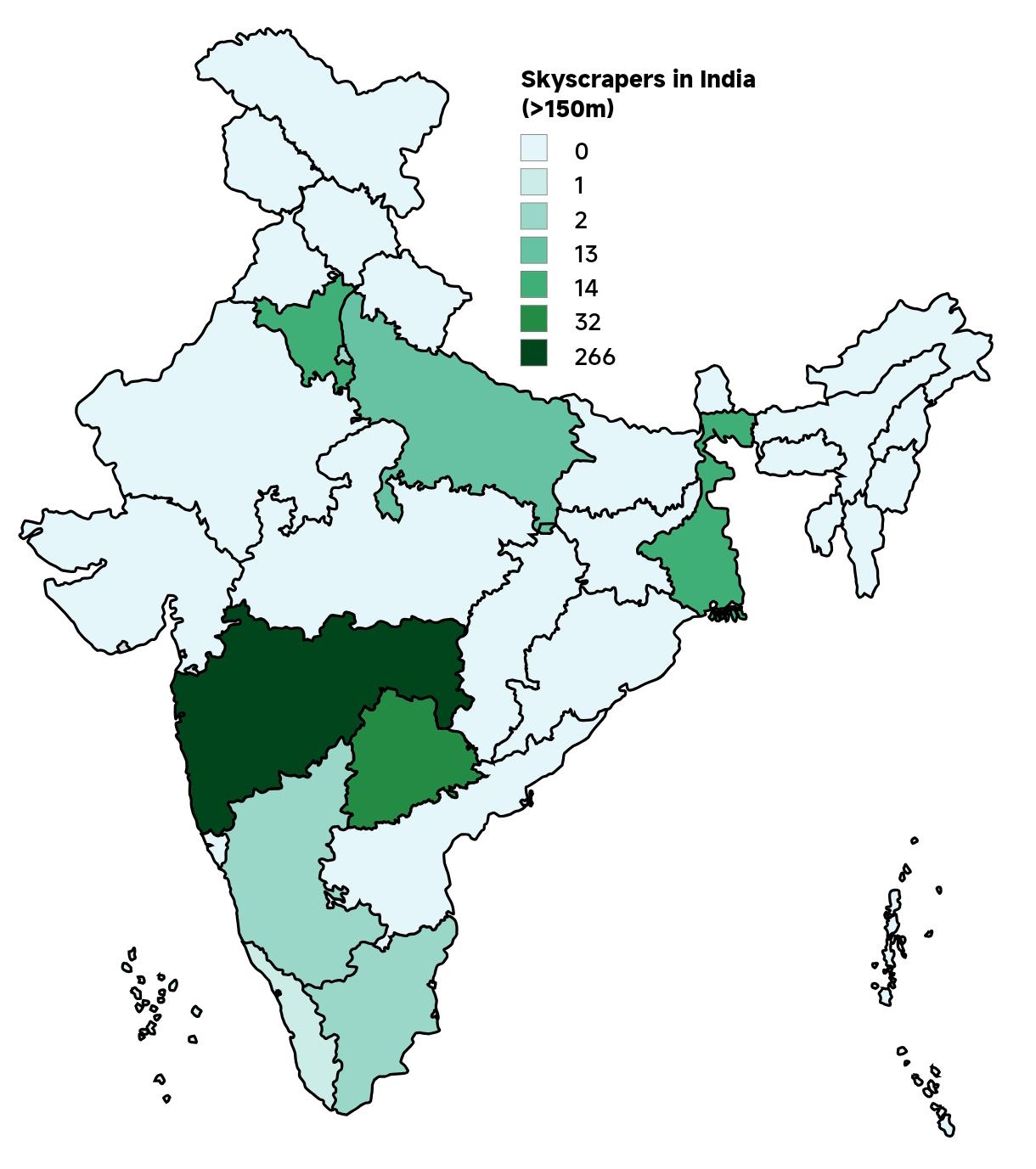Skyscrapers in India Map 2025


Marcus Rodriguez
Historical Geography Expert
Marcus Rodriguez specializes in historical cartography and geographic data analysis. With a background in both history and geography, he brings unique...
Geographic Analysis
What This Map Shows
The "Skyscrapers in India Map 2025" provides a comprehensive visualization of the country's towering architectural achievements expected to dominate the skyline by 2025. This map highlights the locations of India’s tallest buildings, showcasing their heights and the cities they are situated in. As urbanization accelerates and populations swell in metropolitan areas, the rise of skyscrapers not only transforms city skylines but also signifies economic growth and architectural innovation. In this article, we will delve deeper into the prominent features of these skyscrapers and the broader implications of their construction in India’s urban landscape.
Deep Dive into Skyscrapers in India
Ever wondered why skyscrapers have become synonymous with modern urban living? In India, the race to build taller and more sophisticated structures has escalated significantly over the past two decades. By 2025, the country is projected to host some of the tallest buildings in the world, driven by rapid urbanization, economic development, and a burgeoning middle class. Currently, cities like Mumbai, Bengaluru, and Delhi lead the charge, with Mumbai housing the tallest building in India, the Palais Royale, standing at 320 meters.
Interestingly, skyscrapers in India are not just about height; they are often emblematic of the cities’ aspirations and identities. For instance, the upcoming structures are designed with sustainability in mind, incorporating green technologies and energy-efficient systems. This shift towards eco-friendly architecture reflects a growing awareness of environmental impacts in urban planning.
Moreover, the trend toward high-rise living is closely linked to land scarcity in urban areas. As populations continue to swell, building upwards has become a practical solution to accommodate the increasing demand for housing and commercial spaces. The Indian government has also played a role in this growth by easing regulations and encouraging foreign investments in real estate. According to a report by Knight Frank, the total number of skyscrapers in India is expected to rise significantly, with over 100 skyscrapers over 150 meters planned for completion by 2025.
However, this rapid expansion brings challenges. Infrastructure must keep pace with the construction of these towering buildings. Issues such as traffic congestion, water supply, and waste management become critical factors in urban planning. The skyline may look impressive, but ensuring that the cities can support these structures is equally important.
Regional Analysis
Diving deeper into regional specifics, Mumbai continues to be the epicenter of skyscraper development. With its unique geographical constraints and the economic engine of India, it boasts an impressive portfolio of high-rises. In contrast, Bengaluru, known as the Silicon Valley of India, is experiencing a boom in tech-focused skyscrapers, such as the World Trade Center and the Brigade Gateway. These buildings not only serve as offices but also as lifestyle hubs, integrating work and leisure in one space.
Delhi, on the other hand, is seeing a mix of government and private skyscrapers, with projects like the Delhi One Tower aiming to redefine the city’s skyline. Each of these regions presents its own unique architectural styles and purposes, reflecting the diverse cultural and economic landscapes across India.
Interestingly, the cities in the south of India, such as Chennai and Hyderabad, are also catching up, with ambitious projects underway. For instance, Hyderabad's upcoming skyscrapers are set to enhance the city's reputation as a tech and business hub, complementing its rapid economic growth. This trend illustrates the competitive nature of urban development across Indian cities.
Significance and Impact
The implications of skyscraper construction in India extend beyond mere aesthetics. They contribute to job creation, stimulate economic activity, and symbolize progress and modernity. As cities adapt to accommodate their growing populations, these structures also facilitate the development of critical infrastructure, including transportation and utility services.
Moreover, the rise of skyscrapers is indicative of changing lifestyles. With more people moving to urban centers, high-rise living becomes a preferred choice for many, influencing social dynamics and community structures. However, these changes also prompt discussions about affordability, as the cost of living in these areas tends to rise alongside the construction of luxury apartments and office spaces.
As we look towards 2025, the skyscraper phenomenon in India reveals a broader narrative about urban growth and development. The balance between height, sustainability, and urban livability will be crucial as the country continues to evolve. The skyscrapers on the map are not just structures; they are symbols of aspirations, challenges, and the future of urban India.
Visualization Details
- Published
- October 5, 2025
- Views
- 50
Comments
Loading comments...